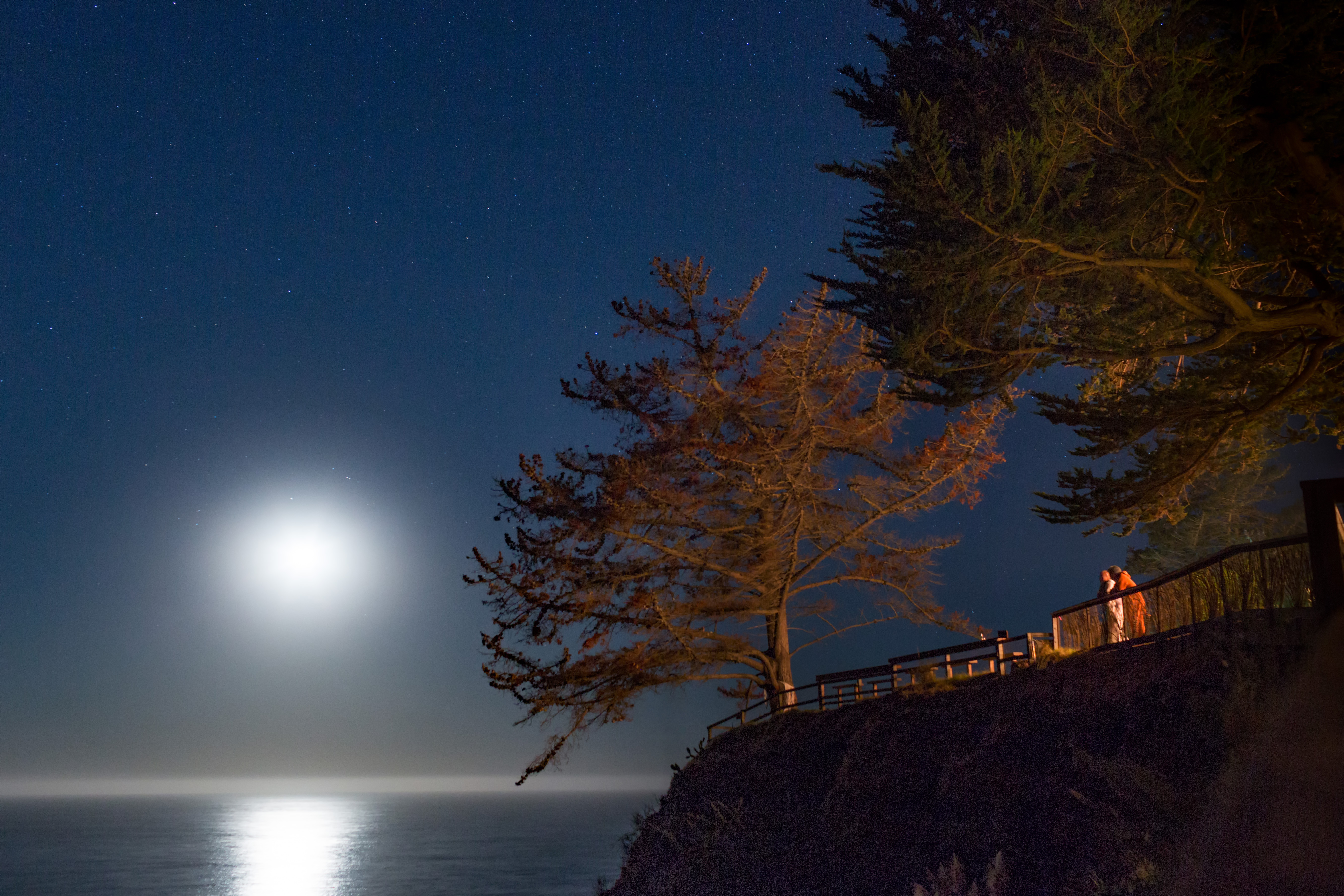 You can’t get to a particular spot along the coast in Big Sur in any of the usual and normal ways.
You can’t get to a particular spot along the coast in Big Sur in any of the usual and normal ways.
You can’t, for example, just head down Route 1 listening to the stern yet comforting voice of the GPS guiding you confidently, determinedly, to your destination. Because you will be told that you have arrived when you are right in the middle of one of the many bridges that span the coastal highway, and if you take the suggested right turn, you will plummet to the sea.
And you can’t just open a map on your phone and find out exactly where you are because … silly you … there hasn’t been cell service for miles. Many miles.
So you continue on for a bit, hoping for the best, hoping for a sign, hoping to be able to find a place to turn around, if it comes to that. But how many more miles should we go? We were due at a certain time, and that time has arrived, and we don’t know if we’ve missed the entrance to where we were supposed to be, or whether we simply haven’t come to it yet and should just keep going.
Eventually we decide to do things the old-fashioned way. We make a U-turn and return to the entrance of the state park we whizzed by earlier and ask: “Have we passed Esalen yet?”
***
Esalen.
We’re conflicted even just saying the word.
We know a bit about the Esalen Institute, more by anecdote than formal inquiry. We know it as a center of the Human Potential Movement, we know that it might be the high church of the religion of no religion, and we know that writers and thinkers and questers of all natures have come here on spiritual journeys. And while we would never question the motivations behind a spiritual journey, we’ve also speculated, as a schoolboy might, about the nature of those activities, both psychological and otherwise.

And oh yes of course, we’ve heard that Esalen is spectacularly beautiful, soothing to the soul and body, a place of power and inspiration.
What we don’t know in this moment, though, is how the locals view the place, and the local now standing before us is a big-hatted park ranger who is already a little annoyed with us because we hadn’t come to a full stop at the guard station quickly enough for his liking. So we’re off on the wrong foot and now we’re asking about that Esalen place, and we’re not sure at all at how this query will be received.
“No, you haven’t passed it yet,” the ranger says maybe a little too loudly but thankfully non-judgmentally. “It’s about 20 minutes down the road. There’s a sign.”
***
Megan Miller is the director of communications for Burning Man. She is bright and engaging, and she tells us that she first came to Esalen at the age of three with her mom, who was making a trek from their home in Alaska to Mexico. Esalen was a stop along the way. It was supposed to be a brief visit, but it wound up lasting longer. Megan is standing in front of about 50 people in a large tent that is about 15 feet from the edge of a cliff that dives to the sea. It is dark, and you can’t see, but you can hear the surf pounding the rocks below.
“This is a place,” Miller says, “to disconnect in order to reconnect. … A place to look at how we’re doing what we are doing, and ask if we are doing what we want to be doing.”

Burning Man does this kind of thing a lot, this examining. After the event in the desert is finished, after all the participants have left, and after all the people who stay to put everything back in its place have gone home, there is work.
There are reports and paperwork and assessments and feedback. And for each of the past ten years or so, there has been a retreat, when Burning Man staffers go away and discuss the particulars and the generalities of Burning Man.
But this year’s getaway isn’t being called a retreat. (And it is not officially being called the Big Sur Regional, although that name pops up more than once.) Marian Goodell, one of the founders of Burning Man, calls it a summit, because there are big things to talk about. It’s a meeting of the minds between two standard bearers of the California cultural vanguard that each find themselves at a crossroads: Esalen, the elder, and Burning Man, the younger. Esalen wants to watch Burning Man think about the present, and Burning Man could learn a thing or two from Esalen about building for the future.
Burning Man’s organization continues to evolve, with the nonprofit Burning Man Project still integrating disparate entities — Black Rock Arts Foundation, Burners Without Borders, Black Rock City LLC — together under common administration. Representatives of Black Rock Solar, the longtime Burning Man partner organization, were also present and part of the discussions at the summit. And the Regional Network, the effort that has Burning Man flags flying in cities around the world, continues to burgeon.
But in a move that either makes perfect sense or is a delicious touch of irony, Burning Man has decided that now is the time to look inward, for each individual to work on getting their own house in order, even as the organization presses forward with its ambitious outward plans. Burning Man takes itself, its mission, its dreams, seriously. There are references to a “hundred year plan,” which makes Burners sound like they are black-clad, sneaker-wearing members of a cult or belief system, but that’s not it. Burning Man isn’t promulgating a theology or ideology. It’s an approach, a way of being, maybe an attitude. During one of the panel discussions, Caveat describes the nature of Burning Man culture as having three simple and succinct characteristics: We’re having fun (maybe more fun than you), the fun is “good” for you, and anyone can play.
***
We get back on the road and continue heading south. You can Google the street view for Big Sur and get a clinical, see-it-with-your-own-eyes idea of just how beautiful the area is. You might not be able to get a visceral sense of the light dappling through the pine trees, and you won’t have to squint when the sun is sparkling like jewelry on the water, but you will know that this is one of the most spectacular places anywhere in the world.
We find the sign for Esalen and are met at the gate by a thin, bearded, friendly young man who eyes the DPW stickers on our car and says, “Well, if you can get through that, this shouldn’t be too hard for you.”
And it seems like he’s right. There are tall palm trees on a big wide lawn that rises a hundred feet above the water. Small groups of people are sitting and talking, and various solitary souls sit on tree stumps or on the grass, cross-legged, staring out into the endless ocean.

We find a place to stash our car and get our bags to schlep to the room. It’s a bit of a walk, because there are no driveways or parking spots near where we will stay. There are other little enclaves of living spaces sprinkled throughout Esalen’s 120 acres, some connected to each other, some sitting in lovely isolation, but all of them facing that endless sea.
As we walk up the path, we see peripherally that there is random, frenetic movement near the trees. Butterflies. Hundreds of them. Giant orange and black and gold Monarch butterflies, flitting and diving and resting on the blooms, living examples of color and life and freedom. Esalen’s sparkle ponies have arrived before us, making their annual migration along the Pacific Coast.
***
Larry Harvey and Michael Murphy are sitting on stage in that same cliff-topping tent near the end of Esalen’s property where we were welcomed to the four-day summit. Stuart Mangrum is up there too, moderating the exchange between one of Burning Man’s founders and the co-founder of Esalen. It’s a little like they are at the adult table, talking as visionaries do, while us kids overhear snippets and try to get the jokes.
Neither of them are forceful speakers, more prone to wryness and subtle intonation than theatrical projection. We feel closer to them for that.
Murphy regales us with stories of how tough it was to maintain control of the area that eventually became Esalen. It was the early Sixties, and while the hippies were just becoming a thing, it was still the Wild West.
He tells us how Hunter S. Thompson would spray the rocky cliffs with gunfire to chase out would-be squatters. The father of gonzo journalism had come to Esalen seeking enlightenment, or maybe just a quiet place to write, and he talked his way into being hired as a groundskeeper. But he took his responsibilities way more seriously than was appreciated, and he was soon asked to leave. (Thompson would make a return trip to Esalen in ’97, blasting into the place in the middle of the night in a convertible, with appropriate arm candy in the passenger seat. But now Thompson found the silence oppressive, and he fled the same night for the anonymity of a Best Western in Monterey.)
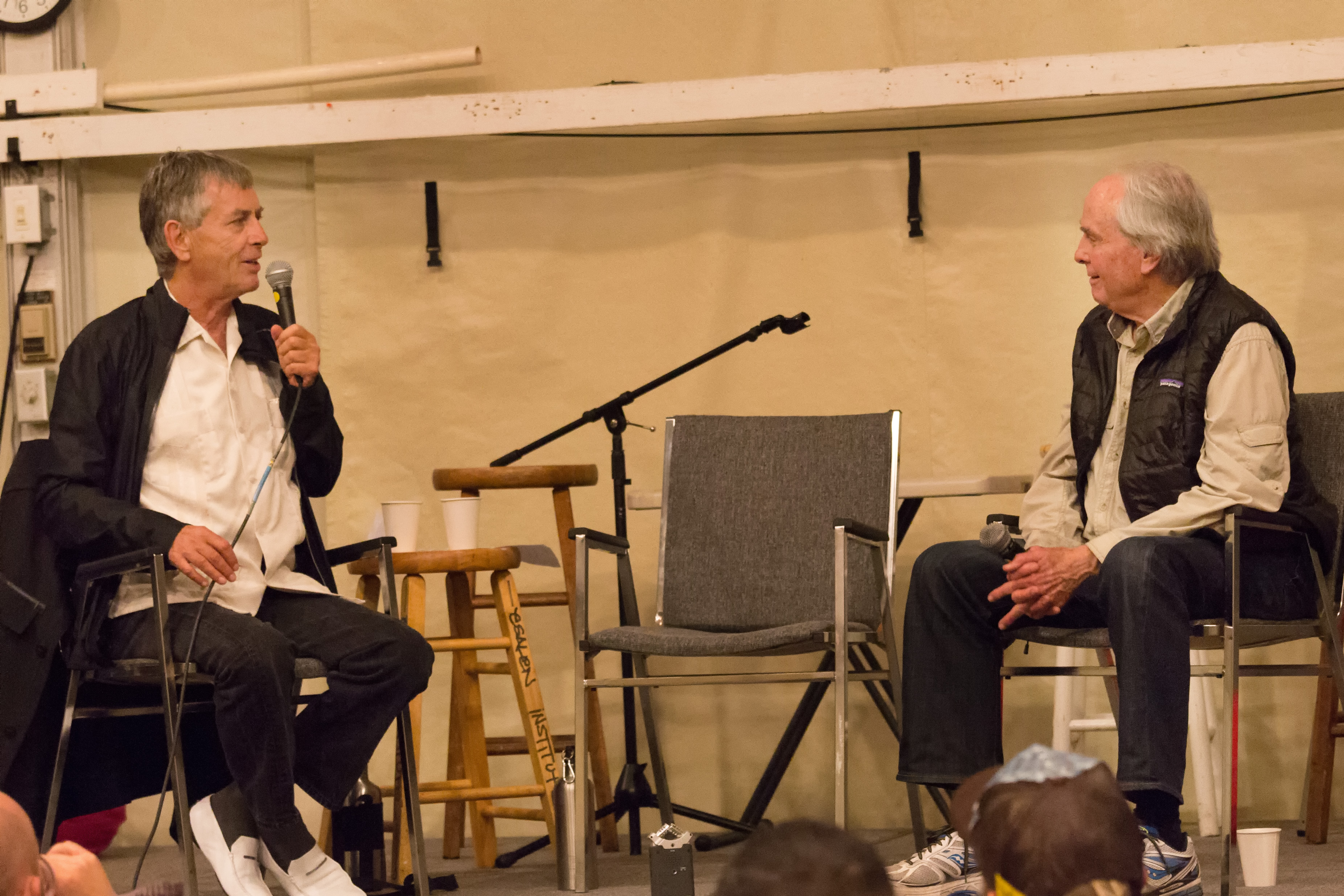
A lot of people didn’t like, or were threatened by, what was happening, or what they thought was happening, at Esalen. Dick Nixon targeted the place for dirty tricks, like the time his henchmen tried to convince the press that Charles Manson had hatched his murderous plans for Sharon Tate while on retreat there. (For the record, Manson never stayed at Esalen.)
Murphy and Esalen prevailed, though, much as Burning Man has overcome the challenges from law enforcement, the BLM, government regulation and any number of political or evangelical objectors — at least so far. “You have to have the warrior spirit to make a thing like this last,” Murphy said.
The two entities have much in common — the adversity, the freedom, the challenge to the status quo, the suspicion of strangers, even the absence of a guiding monotheism. They both provide stages for transformation, without dictating the outcome of that transformation, Esalen on a personal level, Burning Man on a more overtly societal scale.
“So what can we expect from this meeting of the minds,” Goodell asked from the audience as the two men spun their yarns. “Can we discuss our plans for world domination?”
Harvey said that, like Archimedes, they both might be looking for a lever long enough to move the world. Murphy was coy, maybe a bit embarrassed, and blurted: “We’re flirting!”
***
Once ensconced on the grounds and having gotten the lay of the land, we quickly discovered that we’re not really good at the spa life. We don’t have the necessary accouterments to feel like we fit in. We don’t have the flowing shirts and pants that allow for a full range of motion and that say, yes, I am here to stretch and grow. We don’t have the soft shoulder sling to carry the yoga mat we don’t have, or the water bottle we didn’t bring. We don’t have the sturdy but comfortable sandals that slip off easily as we enter the common rooms or meditation centers, and then slide back into for the walk back to the lodge, or down to the baths for a soak.
We even learned that we don’t know how to get a massage.

“Do we need to bring a towel for when we’re finished?” we asked the nice woman at the front desk when we booked a treatment. “Noooo, they have plenty down there,” she said sweetly. “Do we leave our clothes behind beforehand?” “Nooo, they have plenty of places to hang them up.”
“What you want to do,” she said, “is give yourself plenty of time to soak beforehand, so that your body will be really ready for the massage.” Not that we have extensive experience, but we’d always done our luxuriating afterwards, after showering off the oils with which we had been anointed. “Oh, you can just leave them on and have them soak into your skin,” she said. “It’ll feel amazing.”
Ah. Ok. Got it.
***
The people at the summit tackled many big topics: What is Burning Man culture? What is Burning Man art? What does Decommodification really mean? How can the organization foster new affiliations? How can they deal more effectively with political affairs, government relations and law enforcement? How can they facilitate fundraising? Why isn’t Burning Man more diverse? How will the 2016 theme (“DaVinci’s Workshop”) spark conversations about money?
For the record, many of the discussions were passionate and strong. The 2016 theme, especially, provoked divergent views. “The thing is,” Harvey said at one point, “is that we’re taking on the money thing directly. That’s good. That’s what we should be doing.”
The summiteers also could pursue more personal development. They could be guided on a Hero’s Journey. They could seek their North Star. They could take part in any number of movement and meditation exercises in the very early mornings. They could “co-learn” with Esalen staff about sustainability, or go on hikes to hidden hot springs.
Michael Mikel, another of the Burning Man founders, gave his hilarious new presentation, the full title of which is: “Coyote Goes to Burning Man: a presentation by Danger Ranger exploring the historical roots of tricksters, pranksters and surrealistic art at Burning Man.” M2 has given the talk about six times now, and it gets better and more precise each time. If you get the opportunity, you should not miss it.
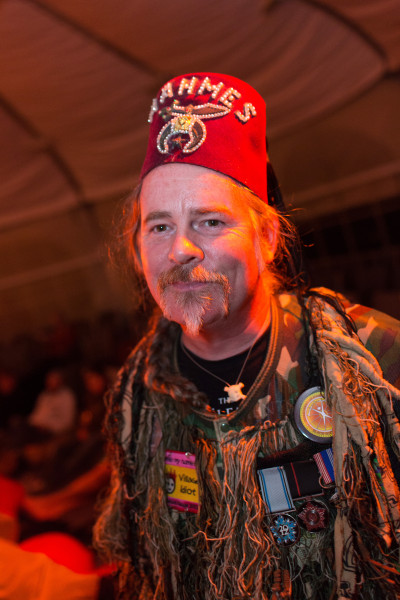
Dave X, shorn of his ability to stage fireworks in the ecologically delicate area, instead presented a history of Burning Man through shadow puppets, a ribald cast of extras, and the pronouncements of his Sham-Man: “Prepare to close your chakras! … Put your hands in each other’s pockets! … Don’t say OMMM, say MMMM…”
Through it all, the participants seemed to get the intention of the outing: They were being asked to work on integrating the interior with the exterior, to be mindful, and as the organization continued to expand, there was a need, and an expectation, to look within, maybe now more than ever.
“This is my worlds colliding,” CameraGirl was saying as she made her way back to the lodge from a session on Personal Transformation. “It’s been a dream forever … (and) it’s never seemed more critical.”
Harvey and Murphy were getting at it during their face-to-face in the tent, too: Murphy went off on a tangent about the art of Norman Rockwell, about how beautiful it was and how deeply it was appreciated, but also how it only captured “things that people know.” On the other hand, he said, “We like to open our hearts and minds to the unknown, (to) find the courage to acknowledge that you are not in control.”
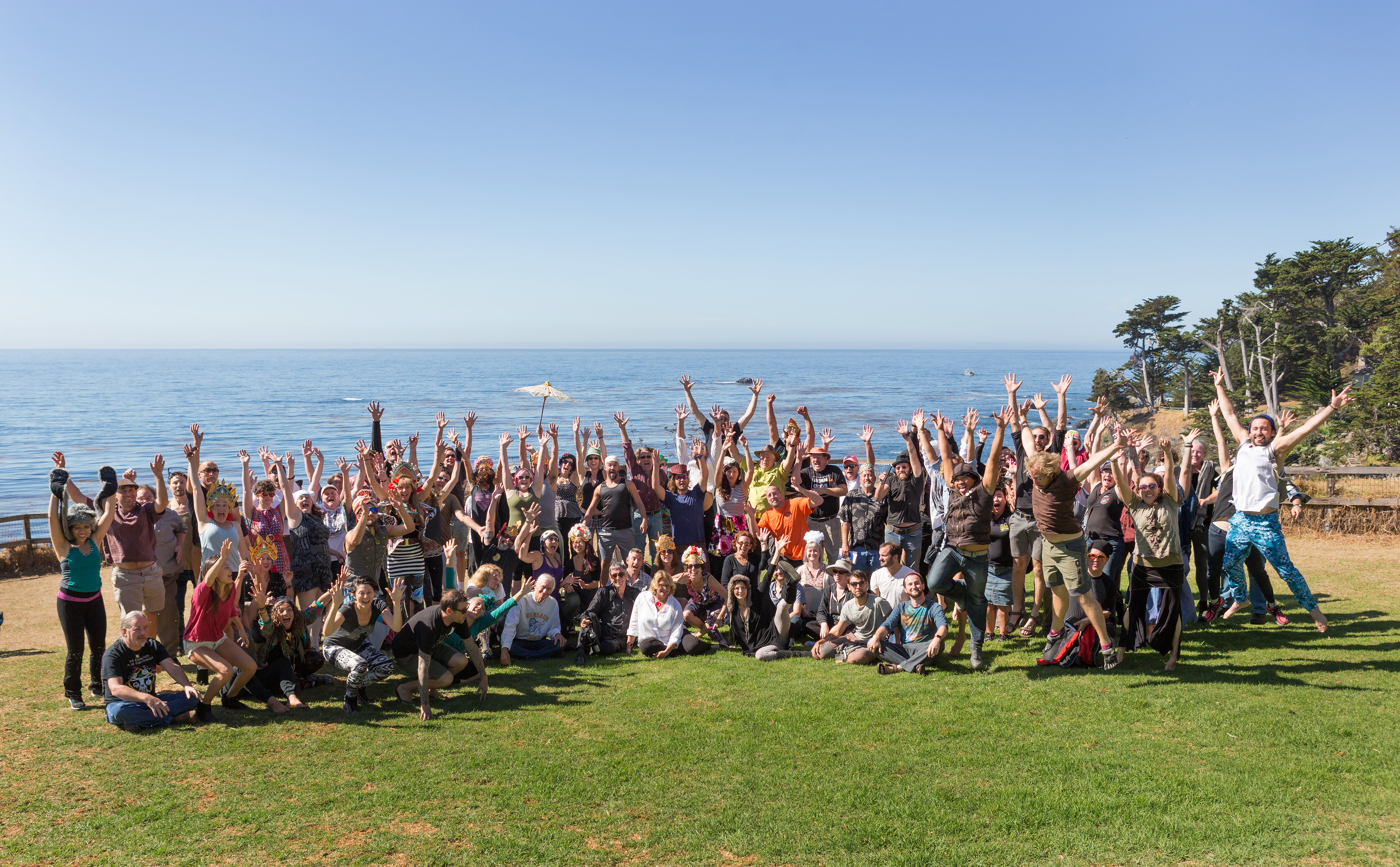

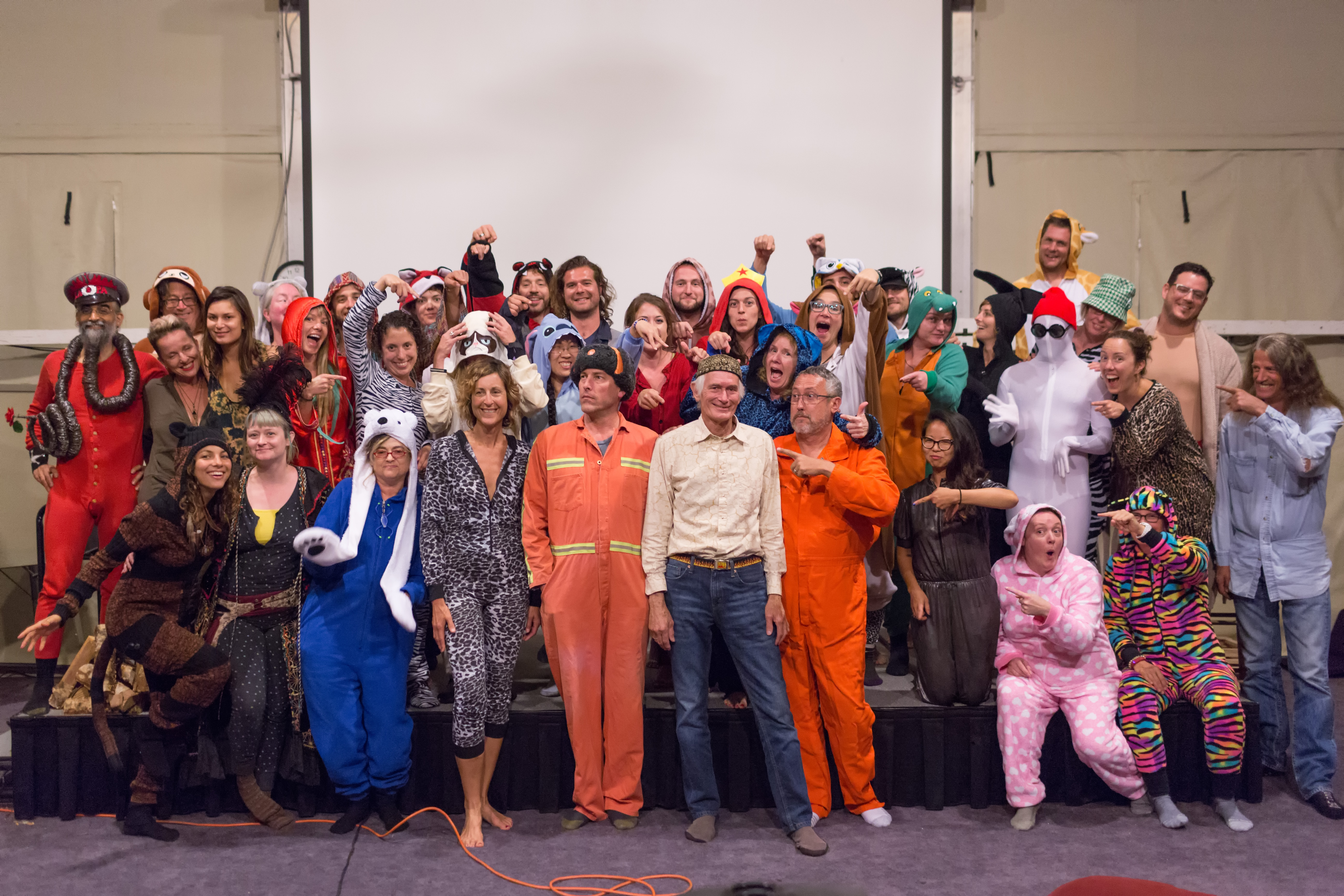
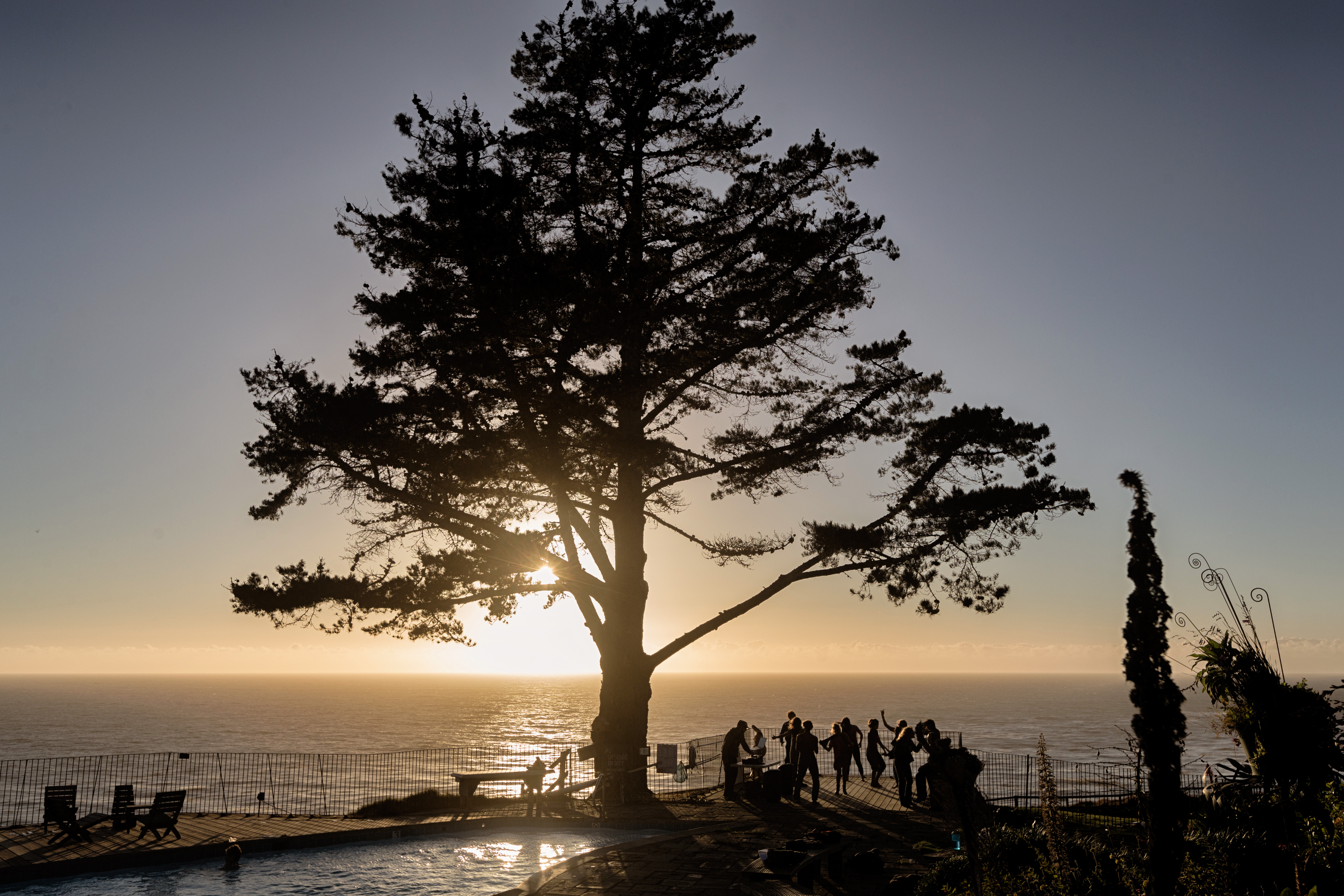

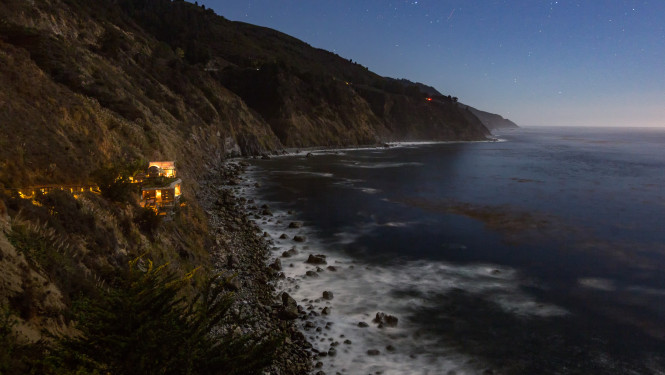
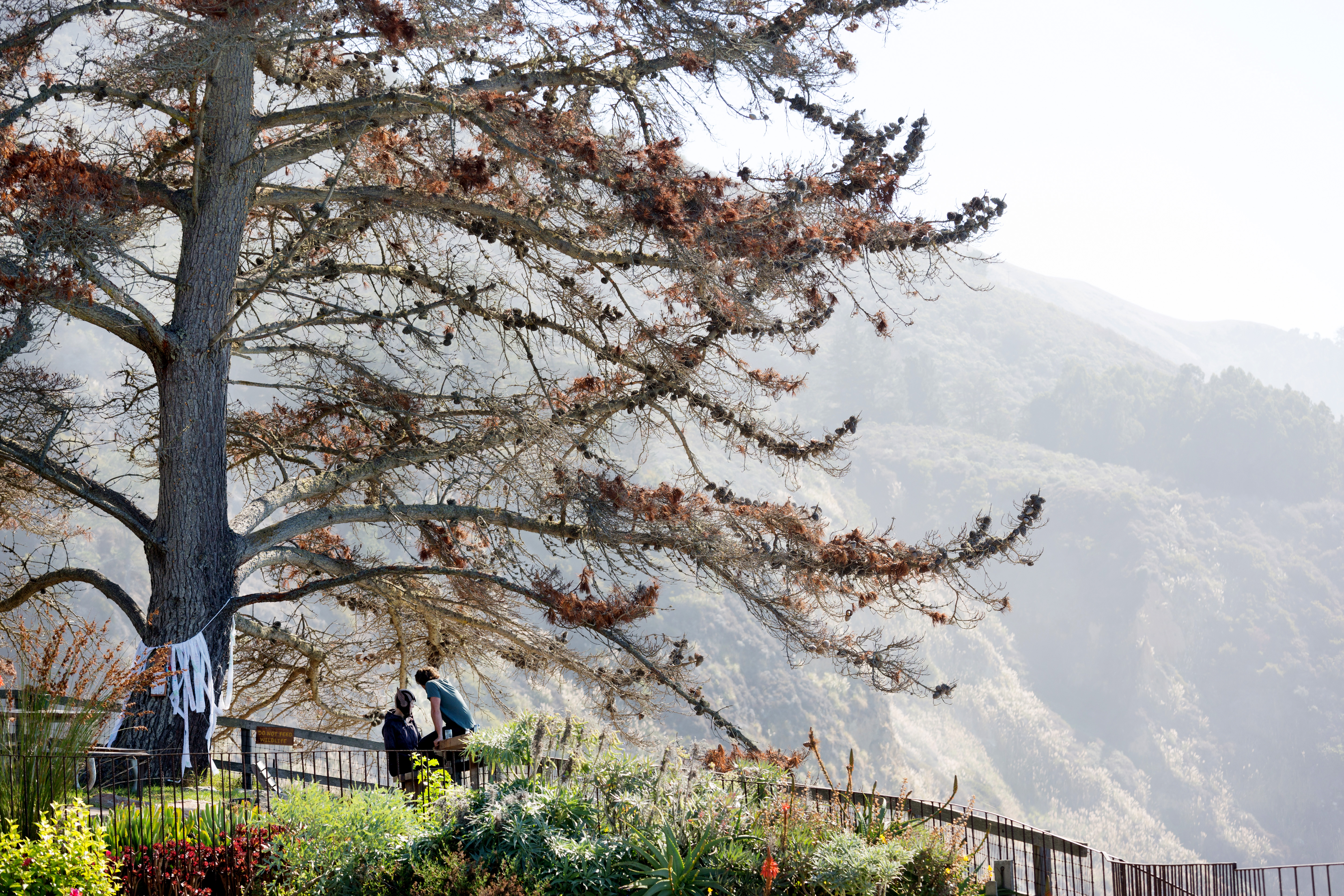
Hmm.
Report comment
What a lovely peek into the summit and the thinking and process that helps create a 100 years plan.
Report comment
Renown photographer we knew. Brilliant blogger, who knew? Such a fresh voice for the Org, please keep writing and posting.
Report comment
Perfectly, perfect! Thank you!
Report comment
Almost made me wonder what Norman Rockwell would’ve created after a trip to BRC?
Report comment
I’ve never read such personal and moving writing that used the editorial “we” as in your pieces for Voices of Burning Man, John. Thank you for sharing it with us.
Report comment
http://www.esalen.org/page/esalen-workshop-tuition-including-accommodations
Report comment
Great insight into this meeting of organizations. I very much hope it continues.
A couple small clarifications:
Hunter Thompson was a caretaker/security guard (“groundskeeper” sort of gives the impression that he was a gardener) and arrived pre-Esalen. He was already there when Michael Murphy and my father, Dick Price, arrived in 1961 and started “the Esalen experiment”. Hunter was fired by Michael’s grandmother not for being over-enthusiastic in his duties (though he was…) but due to her objections to an article he published: http://totallygonzo.org/gonzowriting/rare-articles/
True that Charles Manson never stayed at Esalen. However, he did drop in once; and those there had the sense to kick him out in short order.
Report comment
Thanks for your thoughtful clarifications, and thanks for a terrific experience.
Report comment
Comments are closed.